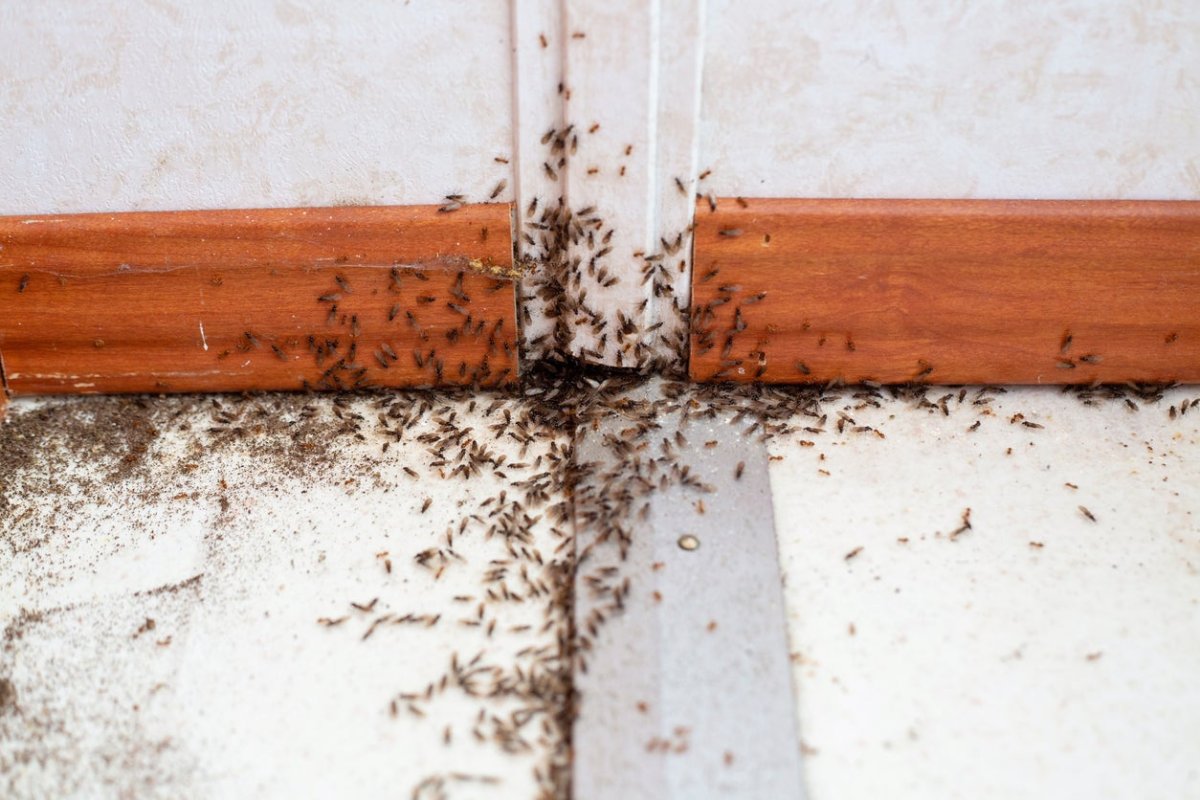

We may earn revenue from the products available on this page and participate in affiliate programs. Learn More ›
Bugs, like all creatures, have their rightful places on the planet. But nobody wants that place to be in their home. Like it or not, insects and all manner of creepy-crawlies make their way into our houses. But we don’t have to invite bugs in or let them stay. Click through and learn how to send some of the most common household bugs packing.
1. Weevils
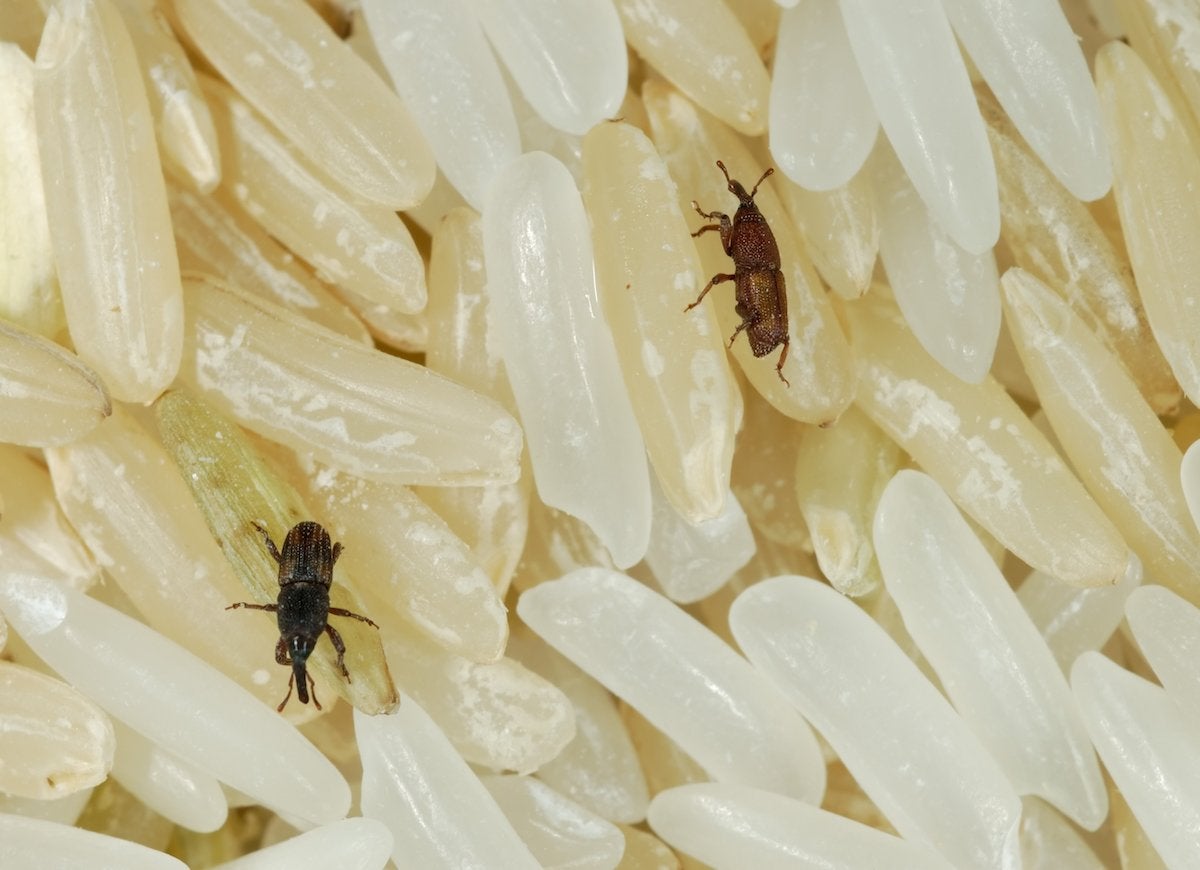
Weevils usually get into your house by hitching a ride in your groceries. Adult weevils burrow into rice and other grains to lay their eggs, so you may not know you’ve brought home pests until they hatch and crawl all over your pantry. The fastest remedy for an infestation? Purge. Get rid of any unsealed dry foods, including flour, cornmeal, oats, rice, pasta, and prepackaged items that don’t have sealed pouches inside. Then, throw away all the boxes of sealed items like soup mixes or gelatin. Even if weevils don’t eat these items, they could enter the boxes to hide, only to reemerge later to contaminate your food. After you’ve tossed the affected foods, clean the pantry shelves, and spray a household insecticide around the area. Once the liquid has had a chance to dry, you can restock.
2. Carpet Beetles
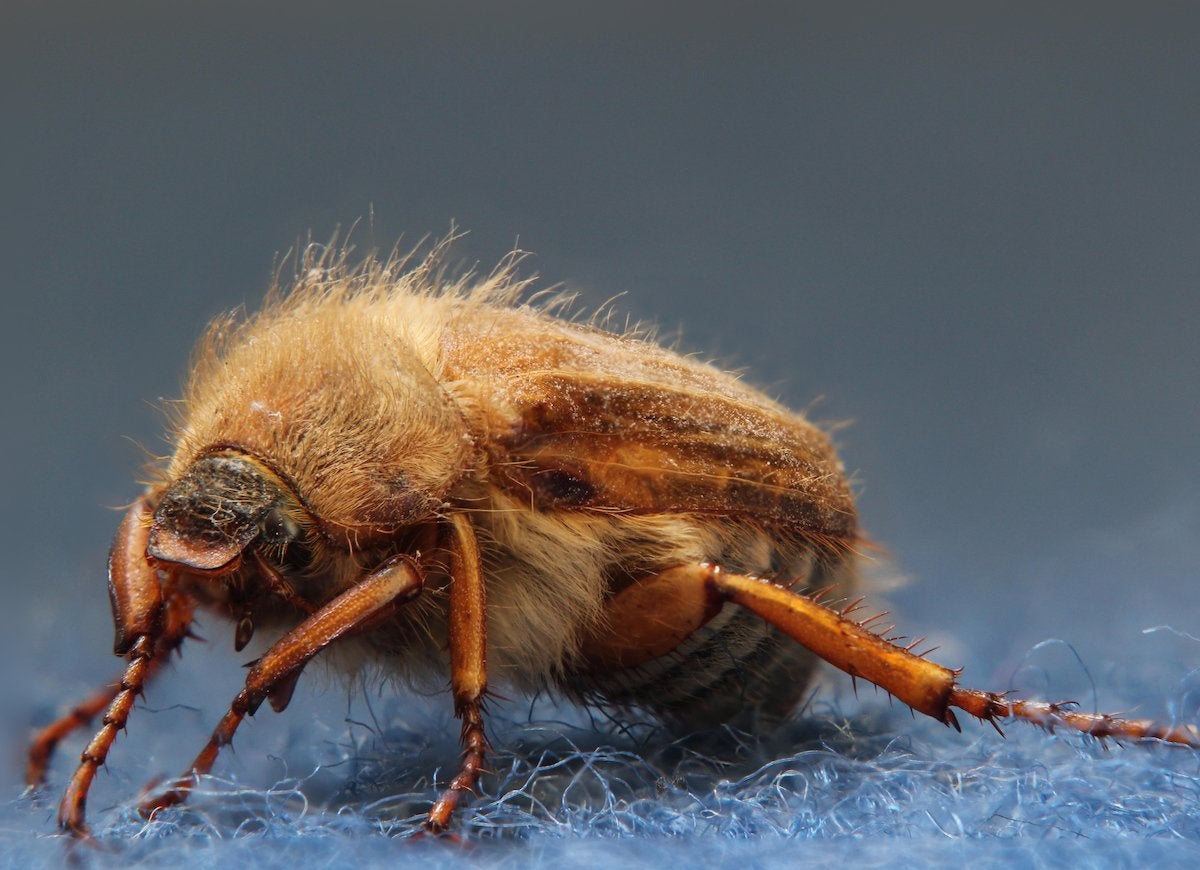
An adult carpet beetle won’t cause your home any harm. Unfortunately, the same cannot be said of their larvae. Carpet beetle larvae can eat holes in rugs, curtains, upholstery, clothing, and books. You may not even know you have an infestation until you notice the damage the pests have already caused such as thinning and bald spots in upholstery or holes in clothing and rugs. If you spot something suspect, roll up your sleeves and clean. Thoroughly dust and vacuum to remove dust bunnies and cobwebs that shelter these pests. Then, remove clothes from your closet and storage bins, and wash everything or send it to the dry cleaners. Finally, treat your rugs with an insecticide, boric acid, or diatomaceous earth to kill any larvae that remain.
3. Centipedes
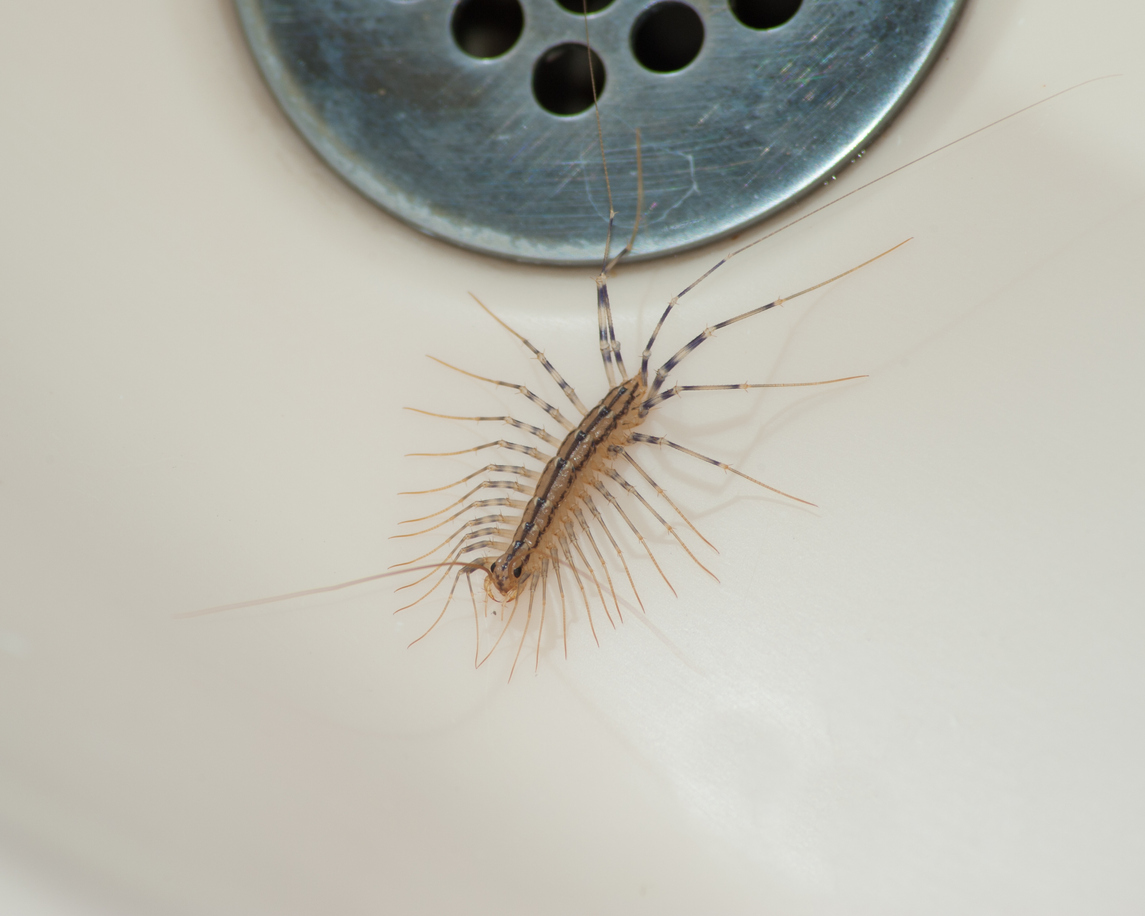
Centipedes are actually some of the good guys. They don’t destroy your home or contaminate your pantry. Instead, they feast on the bad bugs like termites, moths, and roaches. But if you just can’t stomach coexisting with these many-legged neighbors, trap them or spray an insecticide around baseboards, doors, and windows. Meanwhile, prevent a future infestation by removing brush and debris from the perimeter of the house and sealing up cracks and crevices where they could enter your home. Centipedes thrive in moist environments, so you may want to invest in a dehumidifier as well.
4. Fruit Flies
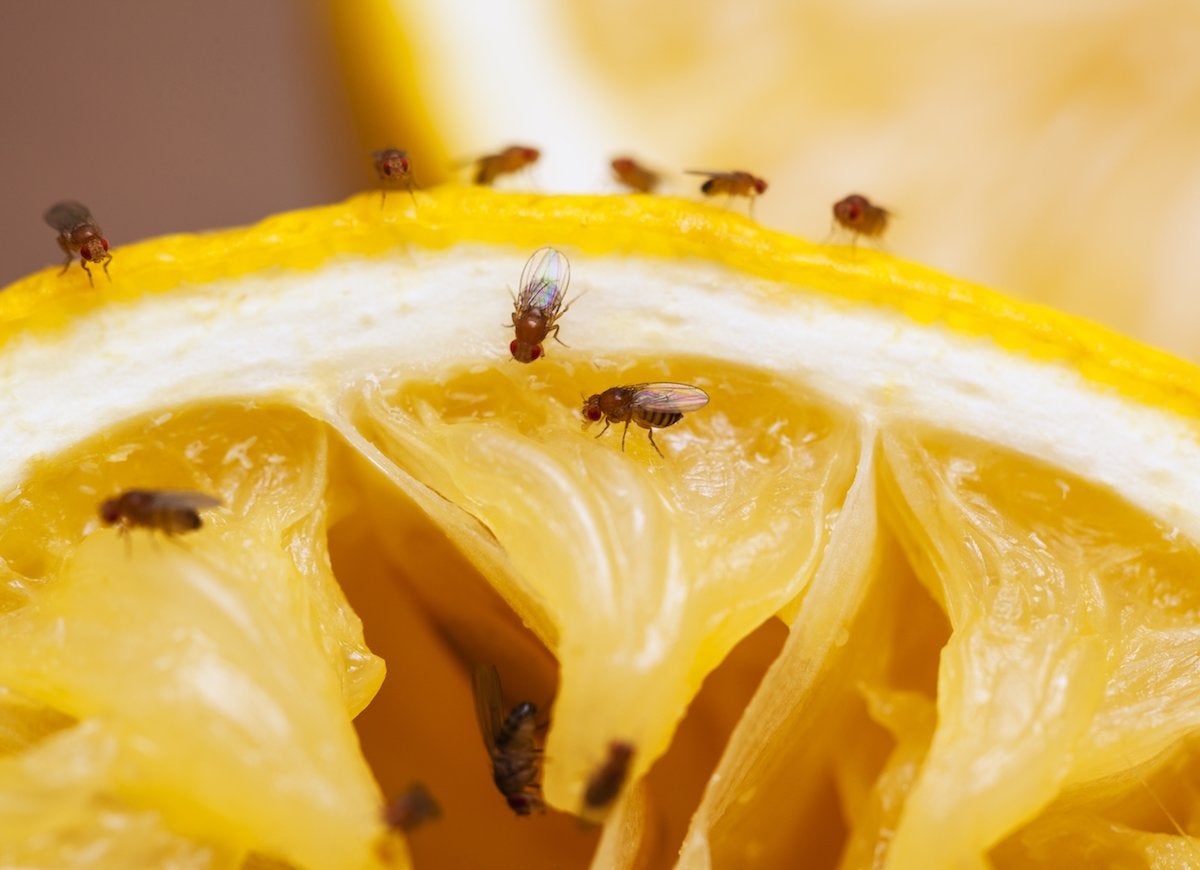
It’s amazing how quickly a fruit fly infestation can get out of hand. You may notice one fly buzzing around your fruit in the morning then come home from work to see half a dozen more. It’s not your imagination; those flies are multiplying, and fast! Fruit fly larvae hatch just 24 hours after eggs are laid, so you’ll want to act fast to take them out. Cut off their food supply by storing soft fruits in the refrigerator. Also, immediately wipe down cutting boards and counters after food prep, and empty your garbage and recycling cans daily. If, in spite of these preventive measures, you spot a few fruit flies, create a simple DIY trap by filling a small tumbler halfway with apple cider vinegar. Then, add a tablespoon of dishwashing liquid, and fill the glass the rest of the way with warm water. The flies will fly into the tumbler, but they won’t fly out.
5. Stink Bugs
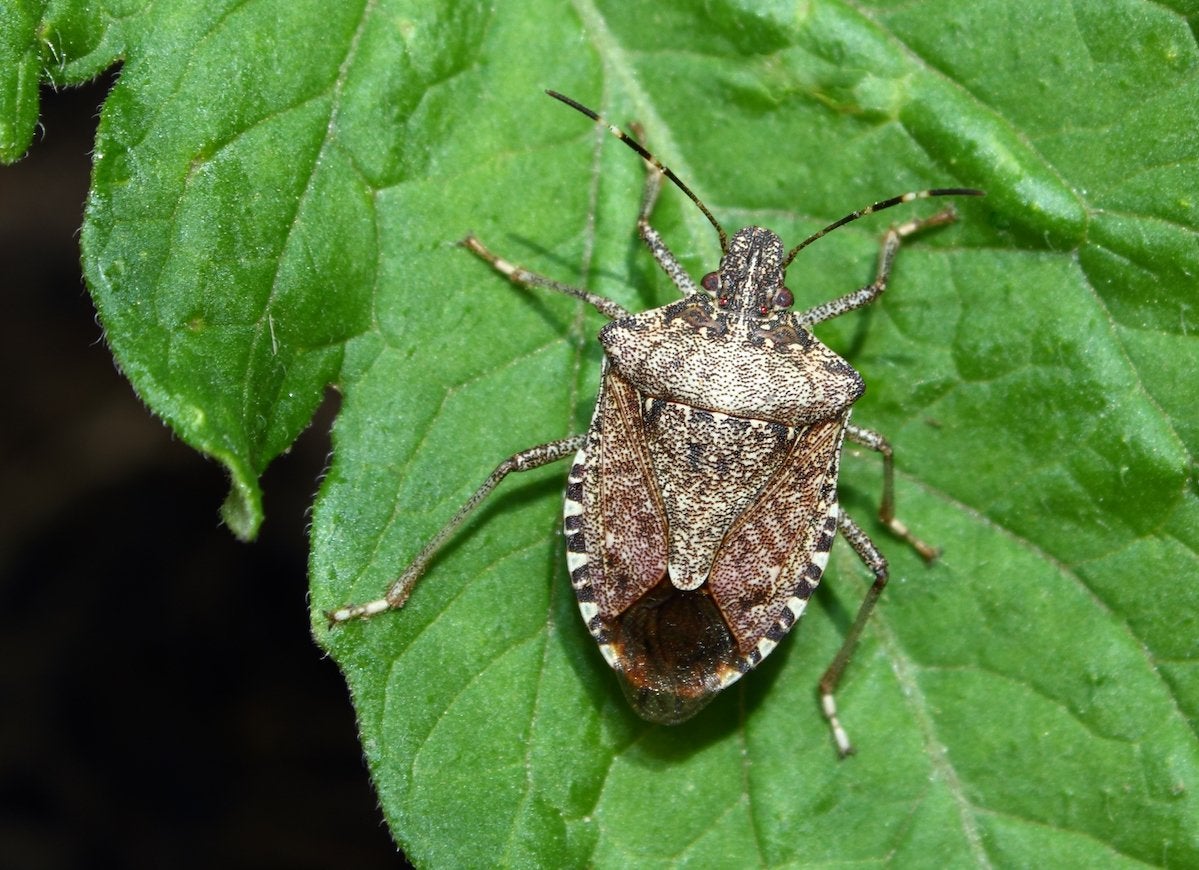
Stink bugs generally live and breed outdoors, but when the temperatures get cooler, they often sneak indoors to hibernate. If you see these shield-shaped bugs in your house, don’t try to swat or squash them. When disturbed, stink bugs live up to their name by emitting a foul odor that only attracts more stink bugs. Try eliminating these bugs by vacuuming them. The only catch is that when you’re done, you’ll have to remove the vacuum bag and dispose of it a safe distance from the house.
6. Ants
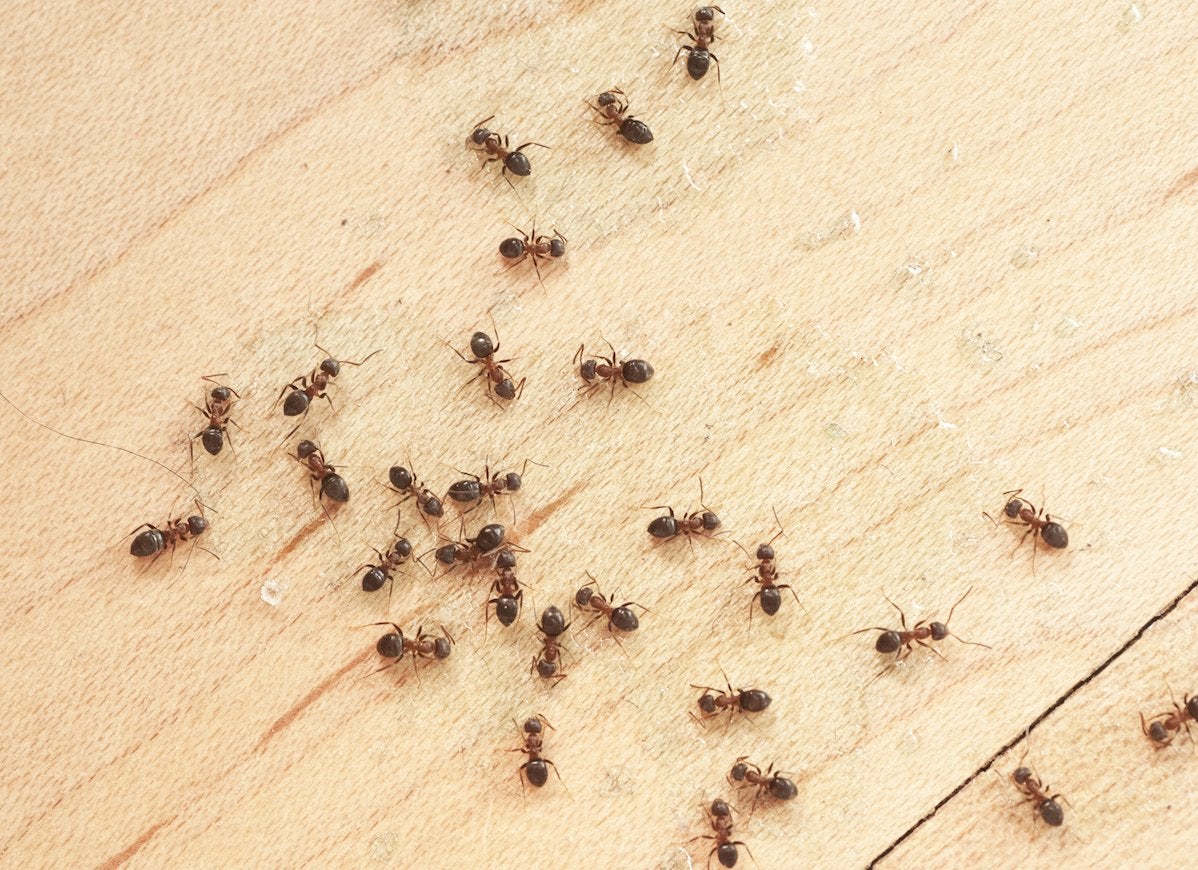
Ants are tiny but relentless home invaders. They enter your home in search of food, water, and shelter, which means your kitchen and bathroom are their prime targets. While baited traps are very effective at eliminating ants, they’re not completely safe to use in areas that small children or pets can access. If you’d rather not use traditional poisons, there are a number of natural remedies you can try. Once you’ve managed to banish these pests, discourage them from returning by vacuuming regularly, wiping down surfaces every day to remove the scent of their trails, and taking out the trash daily.
7. Cockroaches
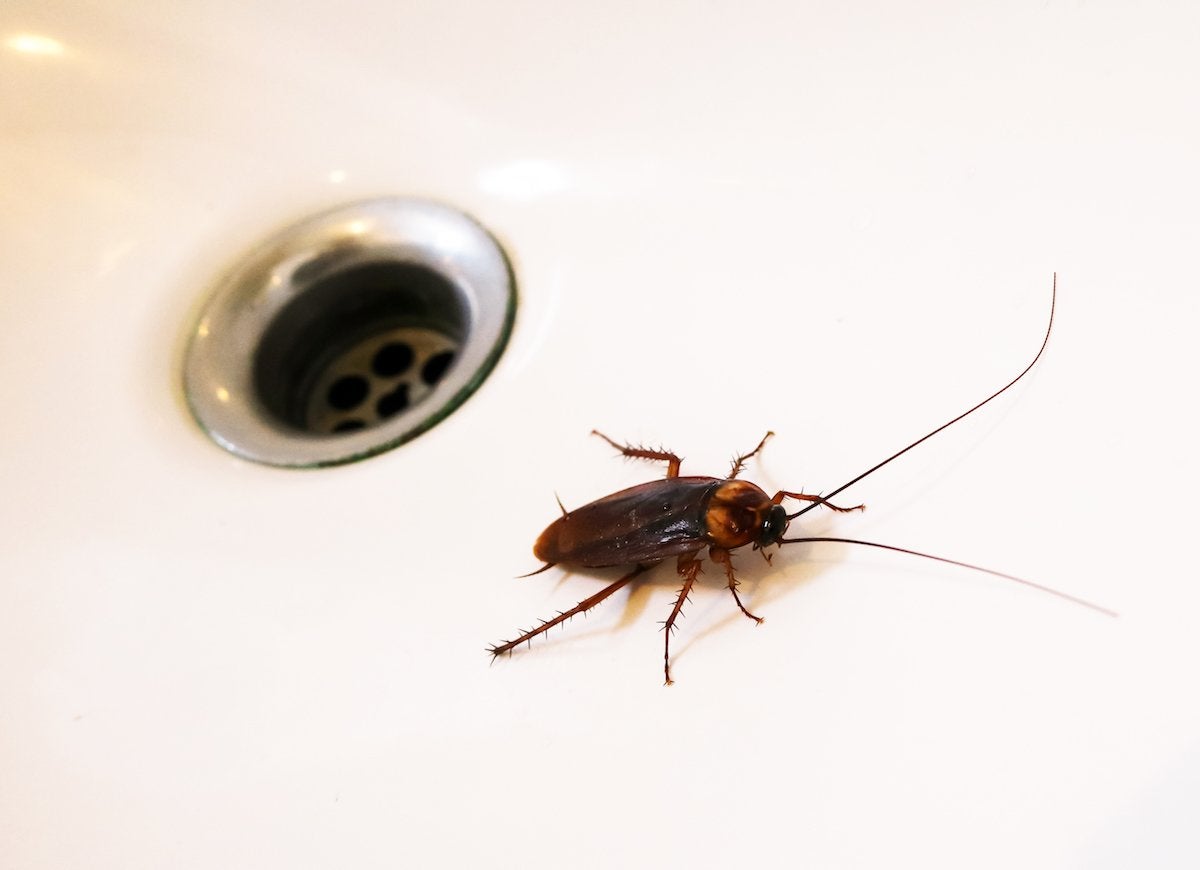
Cockroaches are a problem all over the country but especially in big cities. If you see one—usually in the kitchen or bathroom—you can be sure there are many more unseen. Once they’ve moved in, cockroaches are difficult to dislodge, so take strong, swift, and sustained action. Lay down insecticide or roach traps under the sink, behind the toilet, alongside the fridge, and in other places where they may lurk. Change traps and reapply insecticide on a regular basis to combat new cockroaches as they hatch. In addition, take preventive measures to make your home less attractive. Eliminate their food sources by cleaning up immediately after meals, storing your food in sealed packages, and taking out the trash daily. To be especially thorough, you may also want to remove any leftover kibble from pet bowls when dogs and cats have finished eating.
8. Drain Flies
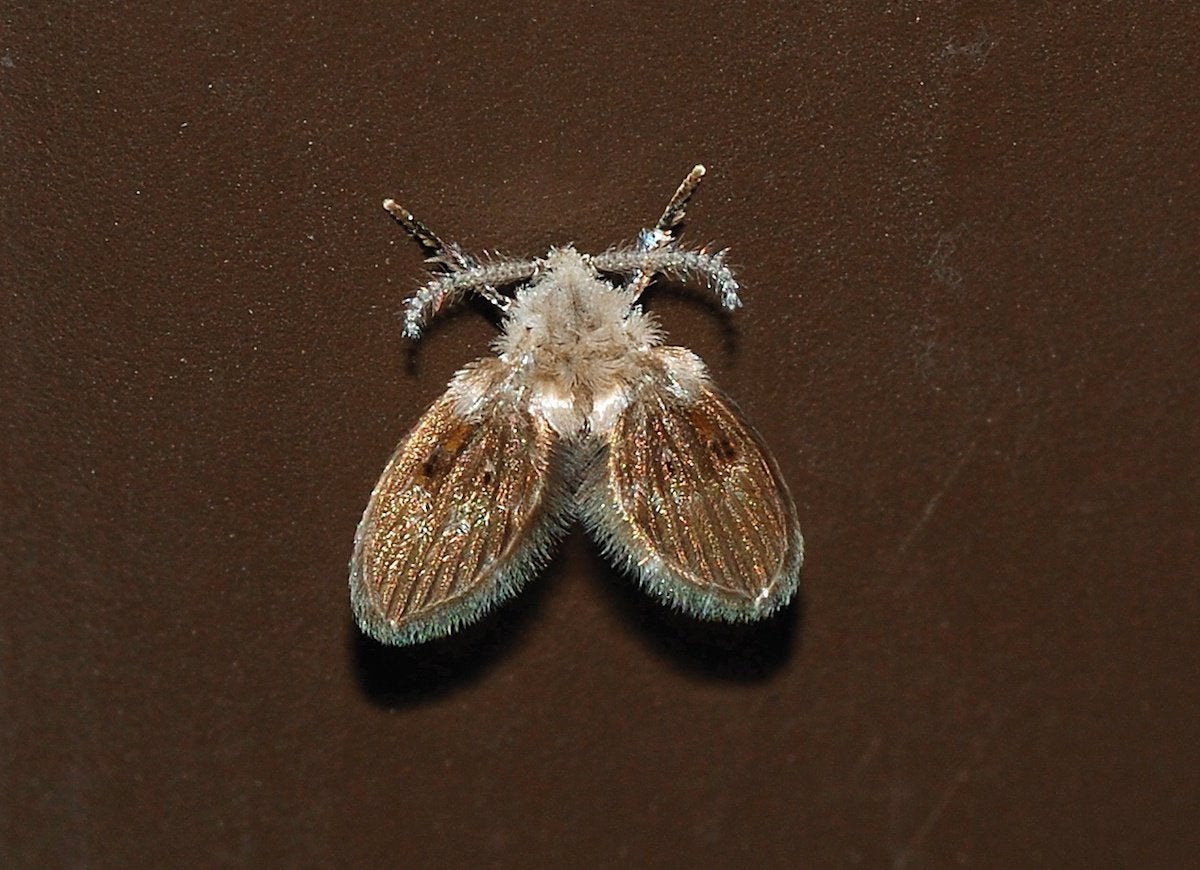
Drain flies live where you’d least expect to find a winged creature: within the depths of your sticky, gunky drains. The reason you’ll find drain flies inside your sink or shower drains is because they feed on and lay eggs in the decomposing gunk that lines slow or clogged drains. If you spot drain flies buzzing around your sink, here’s how to remedy the situation. First, determine which drain they’re flying out of. Chances are there’s a clog in that drain. You’ll need to clear it before you can lose the bugs. Use a pipe snake or pipe brush to scrub away the built-up slime, and then open the P-trap underneath the sink to remove any remnants of the clog. (If you need to use a clog remover, try this one.) Close the system again, and finish by pouring an enzyme cleaner down the drain to remove the rest of the residue and any lingering drain fly eggs.
9. Silverfish
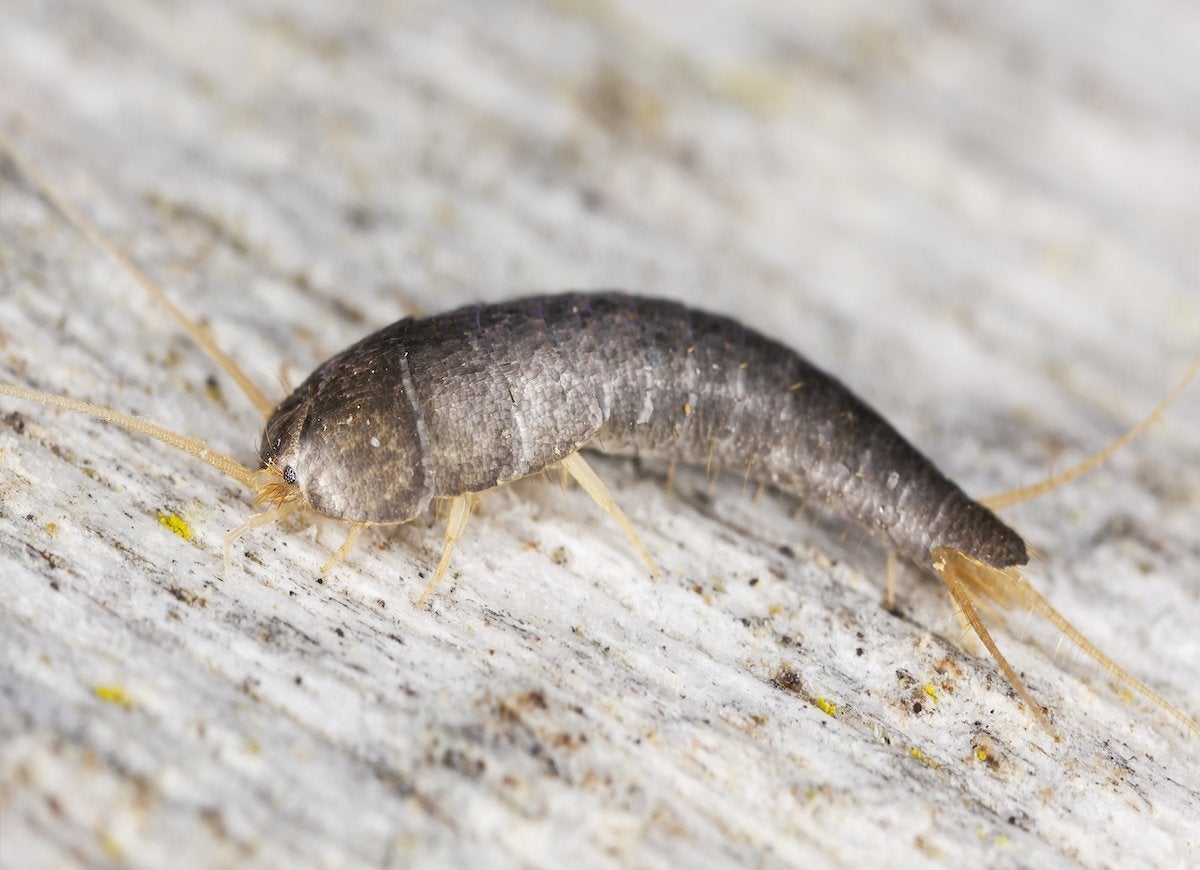
The shimmery and slithering silverfish is one bug you never want to see indoors. This pest will feast on fabric, paper, glue, and cardboard boxes. Silverfish are survivors—they even predate the dinosaurs—so it’s a challenge to get them out of your home once they’re in. You can, however, get rid of them with traps, insecticides, or a natural substance like boric acid or diatomaceous earth. To keep silverfish out, a few small changes can make your home less hospitable to them. Remove piled up newspapers, junk mail, and old cardboard boxes. Store off-season clothing and supplies in plastic bins. Also take your dry goods out of their boxes, and store them in containers with tight-fitting lids.
10. Dust Mites
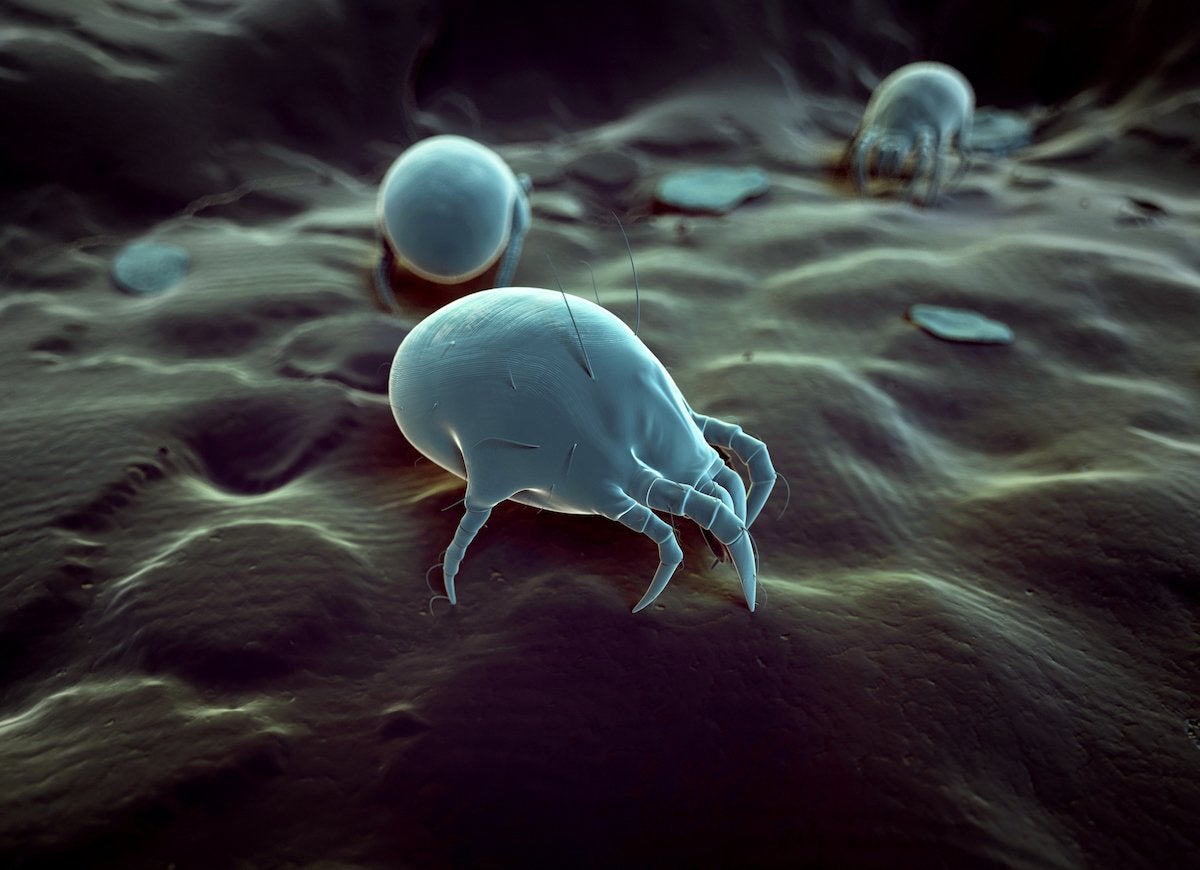
Unpleasant though they may be, every house has dust mites. Because they feed off dead skin cells, dust mites thrive in any plush surface that can hold tasty particles, whether carpet, upholstery, bedding, or kids’ toys. While you can’t completely eliminate mites, you can keep their population down by practicing routine cleaning. Wash bedding in hot water at least once a week, and vacuum carpets and furniture regularly. To remove dust mites from plush toys or delicates you’d rather not wash, look to your freezer. Seal the items in a ziplock bag, and place the bag in the freezer for at least 48 hours—dust mites won’t survive a deep freeze.
